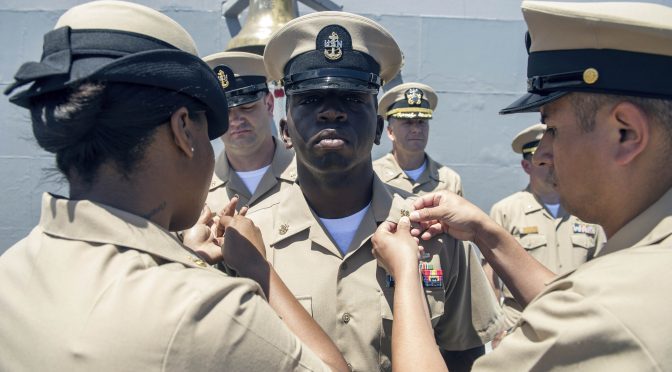By Dmitry Filipoff
This past week CIMSEC featured a topic week on leadership development. In response to our Call for Articles authors shared insightful writings on how to foster creativity and innovation, be better leaders, and recognize the importance of leadership as a key warfighting advantage. We thank our authors for their excellent contributions, listed below.
Making Good Leaders Great: Recommendations to Improve U.S. Navy Leadership by Will Wiley
“This paper will suggest some items for consideration to improve the leaders of today and tomorrow. Some will require funding streams, while others just require forethought and creativity by the leader. These recommendations, when coupled with the immense amount of formal training leaders receive, can make the Navy an even more formidable force today and in the future.”
Enabling Leadership from the Bottom by Jacob Wiencek
“While we should all strive to develop as a leader, to grow, rise up the ranks, and become a senior leader, what we do now can have a profound impact in how we act as we move further up the chain. What I often see neglected is not so much ‘How do I improve and move on to the next rung of leadership?’ but rather ‘How can I be a leader now?'”
Embracing Creativity: A Leadership Challenge by David Andre
“Certainly creativity has always existed within the Navy, but until recently, it was not recognized as an integral value of leadership. Placing it on the same level as compliance and character requires change. And balancing the tension that exists between these values is one of the biggest challenges facing the Navy.”
Innovative Leadership Development: Why and How by Joe Schuman
“According to the Navy Leadership Development Framework (NLDF), effective leaders demonstrate qualities such as humility, honor, courage, commitment, integrity, and accountability. While few would disagree that these character traits are necessary for Navy leaders to be successful, the rapidly changing security environment of the 21st century makes it such that these skills are not sufficient. If the Navy is serious about producing leaders who will be “ready for decisive operations and combat,” it must place a stronger emphasis on promoting innovation throughout its leadership development process as a whole.”
Maritime Profession of Arms in Dangerous Waters? by Tom Bayley
“Although not a real directive, the time may have come for such a dramatic act of courage and leadership to repair the weakening trust within the Navy. The all-volunteer force has completed four decades of service and perhaps that transition was not properly executed. An overly bureaucratic military organization grown over time to train the masses of inducted service members with a ‘one size fits all’ methodology has created an ideology that relies upon lengthy detailed procedures and extensive requirements rather than leadership and good judgment.”
Dmitry Filipoff is CIMSEC’s Director of Online Content. Contact him at Nextwar@cimsec.org.
Featured Image: Chief Gunner’s Mate Jamario Perry is pinned to the rank of a chief petty officer aboard the Ticonderoga-class guided-missile cruiser USS Chancellorsville (CG 62). (U.S. Navy photo by Mass Communication Specialist 2nd Class Andrew Schneider/Released)

